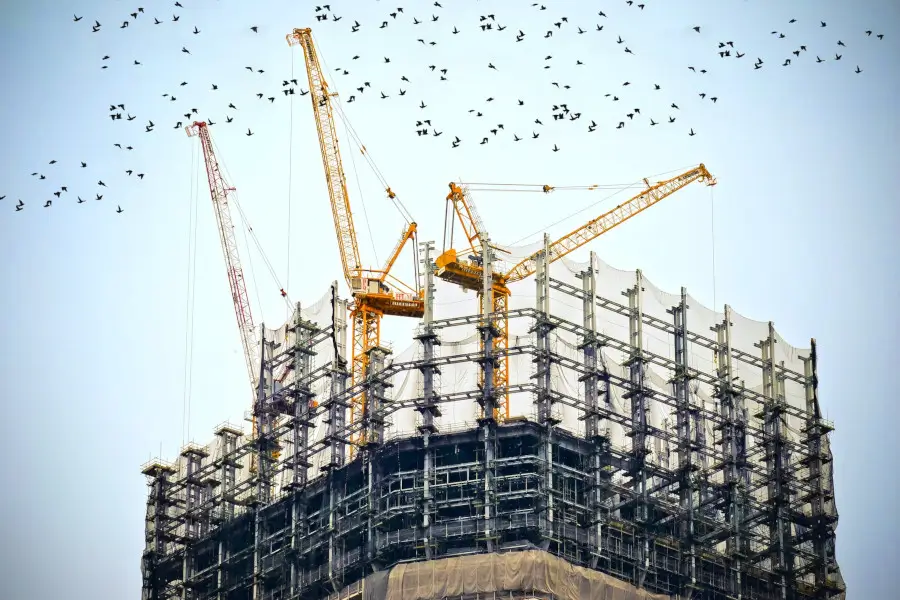ESG (Environmental, Social, Governance) reporting is no longer a voluntary practice for large corporations – it is becoming an integral part of doing business in Europe.
For companies in the construction sector that work with international investors, it is not only an obligation, but also a new way to build credibility and competitive advantages.
In this context, used scaffolding takes on additional significance. Choosing it not only reduces CO₂ emissions and raw material consumption, but also provides data that can be used in ESG reports. In this article, we explain how to document this impact in a practical way – without excessive formalities.
Table of contents
CSRD in a nutshell – what it means for the construction industry
In 2024, the EU’s CSRD (Corporate Sustainability Reporting Directive) came into force, requiring an increasingly wider range of companies to report ESG data.
In practice, this means that large companies, as well as their subcontractors, will have to collect and report environmental data on, among other things, energy consumption, the origin of materials, and transport-related emissions.
Reporting is carried out according to uniform ESRS (European Sustainability Reporting Standards). Two areas are key for the construction industry:
- E1 – Climate change, i.e., CO₂ emissions, carbon footprint, and climate neutrality,
- and E5 – Circular economy, which includes the reuse of materials and extending the life cycle of products.
It is in these areas that used scaffolding can bring the greatest reporting value.

How used scaffolding affects environmental data in ESG reports
The decision to choose equipment from the secondary market is more important than it might seem. Unlike many pro-environmental activities that require new investments, used scaffolding brings immediate benefits — without additional implementation costs.
Fewer emissions, smaller environmental footprint
The production of new steel is an energy-intensive process. Every ton that does not have to be produced from scratch means an average of 2.33 tons less CO₂ in the emissions balance.
On the scale of the entire investment, this is a real difference that can be included in the ESG report in the section on climate (ESRS E1).
In addition, the use of ready-made scaffolding kits from the European market shortens the supply chain and reduces the transport footprint.
The most common environmental benefits of using used scaffolding:
- Reduction of greenhouse gas emissions,
- reduction in demand for new steel,
- reduction in international transport,
- lower energy consumption during the investment life cycle.
Extended equipment life cycle
From a circular economy perspective (ESRS E5), each reuse of a component means less waste and less demand for new raw materials.
Used scaffolding extends the life cycle of materials, which translates into improved environmental performance indicators for investments.
Instead of reporting only consumption, a company can also show the scale of resource recovery and reuse.
What data can realistically be reported
ESG reporting does not require complex tools – the key is to collect data consistently and reliably.
Construction companies that use second-hand scaffolding can report, among other things, the amount of steel reintroduced into circulation, the percentage of equipment sourced from the secondary market, and the transport distance between the warehouse and the construction site.
Examples of indicators that can be used in ESG reports:
- The amount of steel reused in the investment,
- the percentage of used equipment in the total scaffolding fleet,
- the reduction in CO₂ emissions compared to the purchase of new equipment,
- the average transport distance and the impact on the carbon footprint.
In practice, this data is already available in purchasing or logistics documentation. All you need to do is organize it and include it in your ESG report as evidence of reducing emissions and promoting a circular economy.

Summary
ESG reporting in accordance with the CSRD directive introduces a new quality in construction – more transparent, measurable, and data-driven. However, this does not require complex tools, and many indicators can be built on the basis of simple purchasing decisions.
The use of used scaffolding reduces emissions, supports the circular economy, and provides companies with hard data for ESG reports.
Sustainable construction does not always require new technologies – sometimes a smarter choice is enough.

